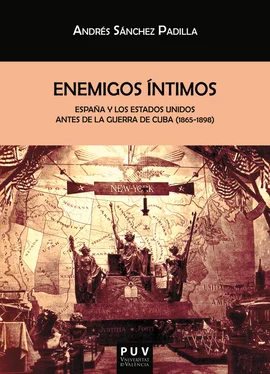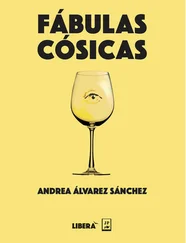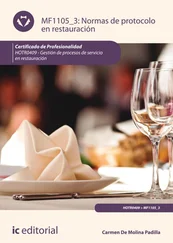60 Un fracaso , en todo caso, relativo. Tal y como dice Joseph A. Fry, las tesis revisionistas “nonetheless continue to set the contours of discussion and analysis”, FRY, J.A. (1996), “From Open Door to World Systems: Economic Interpretations of Late Nineteenth Century American Foreign Relations”, Pacific Historical Review , 65 (2), p. 303.
61 CRAPOL, E.P. (2000), “Coming to Terms with Empire: The Historiography of Late Nineteenth-Century American Foreign Relations”, en HOGAN, M.J., ed., Paths to Power: The Historiography of American Foreign Relations to 1941 , New York, Cambridge University Press, pp. 79-116.
62 PLETCHER (1981), “Rethoric and Results: A Pragmatic View of American Economic Expansionism, 1865-1898”, Diplomatic History , 5 (2), p. 104. Otro intento de síntesis que no ha generado consenso, en el trabajo de BEISNER, From the Old Diplomacy .
63 ZAKARIA, From Wealth to Power .
64 KAGAN, R. (2006), Dangerous Nation , New York, Knopf.
65 NINKOVICH, F. (1982), “Ideology, the Open Door, and Foreign Policy”, Diplomatic History , 6 (2), pp. 185-208; STEPHANSON, “Diplomatic History”.
66 ROSENBERG, E.S. (1982), Spreading the American Dream: American Economic and Cultural Expansion, 1890-1945 , New York, Hill and Wang, p. 7.
67 HUNT, M.H. (1987), Ideology and U.S. Foreign Policy , New Haven, CT, Yale University Press.
68 Sobre el corporatismo, cfr. McCORMICK, T.J. (1982), “Drift or Mastery? A Corporatist Synthesis for American Diplomatic History”, Review in American History , 10 (4), pp. 318-330; GADDIS, J.L. (1986), “The Corporatist Synthesis: A Skeptical View”, Diplomatic History , 10 (4), pp. 357-362; HOGAN, M.J. (2004), “Corporatism”, en HOGAN, M.J. & PATERSON, T.G., eds., Explaining the History of American Foreign Relations , New York, Cambridge University Press, pp. 137-148.
69 NINKOVICH, F. (1998), “No Post-Mortems for Post-Modernism, Please”, Diplomatic History , 22 (3), pp. 451-466; SCHWARTZ, T.A. (2007), “Explaining the Cultural Turn —or Detour”, Diplomatic History , 31 (1), pp. 143-147.
70 DEPKAT, V. (2003), “Cultural Approaches to International Relations: A Challenge?”, en GIENOW-HECHT, J.C.E. & SCHUMACHER, F., eds., Culture and International History , New York, Berghahn Books, pp. 185-186.
71 HOGANSON, K.L. (1998), Fighting for American Manhood: How Gender Politics Provoked the Spanish-American and Philippine-American Wars , New Haven, CT, Yale University Press.
72 DEPKAT, “Cultural Approaches”, p. 181. BUZZANCO, “What Happened to the New Left?”, p. 586, llega a una conclusión similar desde una perspectiva revisionista: “gender assumptions and choice of words are principally a good starting point for analysis rather than conclusive in their own right. Certainly, American policymakers, overwhelmingly male and products of privileged backgrounds in most cases, were predisposed to think, act, and talk in a certain way, and it adds to our understanding of foreign policies if we examine the cultures from which these men came and the way they looked at the world. It seems, however, that masculine ideologies or language, which are artificially constructed and reflect larger values, tend to be instruments of policy rather than agents”.
73 NINKOVICH, F. (2011), “Author’s Response”, en MADDUX, T. & LABROSSE, D., eds., H-Diplo/ISSF Roundtable Review of Frank Ninkovich. Global Dawn: The Cultural Foundation of American Internationalism, 1865-1890 (http://www.h-net.org/~diplo/ISSF/PDF/ISSF-Roundtable-3-3.pdf).
74 Es irónico que el análisis cultural pueda en algunos casos convertirse en un nuevo reduccionismo epistemológico cuando su origen se encuentra precisamente en la insatisfacción que había generado el determinismo de las teorías materialistas precedentes. Aunque hay otros historiadores culturales que tienen claro que el reduccionismo no permite avanzar en ninguna dirección: “If we must have an ideological explanation, it must do justice to the actual complexities of ideological experience”, NINKOVICH, “Ideology, the Open Door”, p. 206.
75 DEPKAT, “Cultural Approaches”, p. 182.
76 La cata de archivos con documentación diplomática también requiere más tiempo que el análisis del discurso, STEPHANSON, A. (1994), “Commentary: Considerations on Culture and Theory”, Diplomatic History , 18 (1), p. 116.
77 ADAS, M. “Review”, en MADDUX, T. & LABROSSE, D., eds., H-Diplo/ISSF Roundtable Review of Frank Ninkovich. Global Dawn: The Cultural Foundation of American Internationalism, 1865-1890 (http://www.h-net.org/~diplo/ISSF/PDF/ISSF-Roundtable-3-3.pdf); SHIBUSAWA, N. “Review”, en MADDUX, T. & LABROSSE, D., eds., H-Diplo/ISSF Roundtable Review of Frank Ninkovich. Global Dawn: The Cultural Foundation of American Internationalism, 1865-1890 (http://www.h-net.org/~diplo/ISSF/PDF/ISSF-Roundtable-3-3.pdf).
78 NINKOVICH, “Author’s Response”.
79 Soy consciente, sin embargo, de que las transferencias culturales entre ambos países no se limitaron a las exposiciones internacionales y que existieron intermediarios culturales independientes de ambos Estados (emigrantes, viajeros, misioneros, etc), cfr. NIÑO, A. (2008), “Relaciones y transferencias culturales internacionales”, en PELLISTRANDI, B. & SIRINELLI, J.F., eds, L’histoire culturelle en France et en Espagne , Madrid, Casa de Velázquez, pp. 179-205.
80 SCHUYLER, E. (1886), American Diplomacy and the Furtherance of Commerce , New York, C. Scribner’s Sons.
81 PÉREZ, L.A. (1989), “The Meaning of the Maine: Causation and the Historiography of the Spanish-American War”, Pacific Historical Review , 58 (3), pp. 293-322, advierte certeramente contra los abusos interpretativos que ha originado el rol causal otorgado con demasiada frecuencia a la opinión pública en la Guerra de 1898.
82 Un ejemplo en NINKOVICH, F. (2009), Global Dawn: The Cultural Foundation of American Internationalism , Cambridge, MA, Harvard University Press.
83 De momento, sólo existen trabajos aislados: INAREJOS, J.A. (2010), Intervenciones coloniales y nacionalismo español: la política exterior de la Unión Liberal y sus vínculos con la Francia de Napoleón III (1856-1868) , Madrid, Sílex; SÁNCHEZ ANDRÉS, “Una diplomacia defensiva”. Un repaso de la bibliografía en VILAR, J.B. (2007), “Aproximación a las relaciones internacionales de España (1834-1874)”, Historia Contemporánea , 34, pp. 7-42.
84 GARCÍA SANZ, F. (1994), Historia de las relaciones entre España e Italia. Imágenes, comercio y política exterior (1890-1914) , Madrid, CSIC.
85 RUBIO, J. (1995), “La política exterior de Cánovas: una profunda revisión”, Studia Historica. Historia Contemporánea , 13-14, pp. 167-197; SALOM, J. (1999), “La política exterior y ultramarina de Cánovas”, en TOGORES, L.E. & BULLÓN DE MENDOZA, A., eds., Cánovas y su época , Madrid, Fundación Cánovas del Castillo, pp. 1.087-1.136.
86 ELIZALDE, M.D. (1998), “Política exterior y política colonial de Antonio Cánovas: dos aspectos de una misma cuestión”, en TUSELL, J. & PORTERO, F., eds., Antonio Cánovas y el sistema político de la Restauración , Madrid, Biblioteca Nueva, pp. 233-288.
87 Aunque ya se ha empezado a especular al respecto, cfr. RUBIO, J. (2011), El tránsito del siglo XIX al XX: del Desastre de 1898 al principio del reinado de Alfonso XIII , Madrid, MAEC, vol. 2, pp. 1.215-1.240.
88 No hay que olvidar que hasta 1900, el Ministerio de Estado no tenía sede propia, sino que estaba ubicado dentro del Palacio Real, cfr. FERNÁNDEZ ESPESO, C. & MARTÍNEZ CARDÓS, J. (1972), Primera Secretaría de Estado. Ministerio de Estado. Disposiciones orgánicas , Madrid, MAE.
Читать дальше












